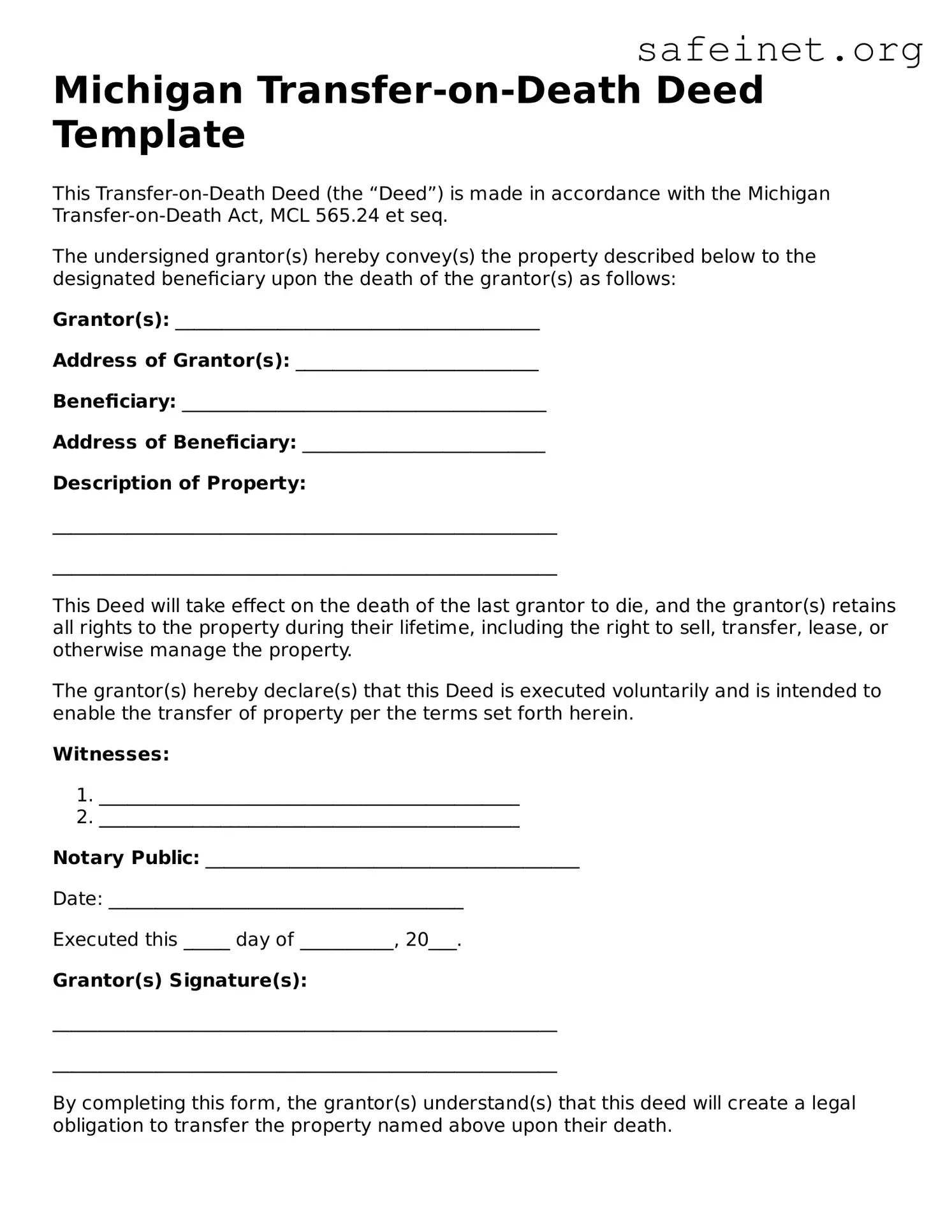Michigan Transfer-on-Death Deed Template
This Transfer-on-Death Deed (the “Deed”) is made in accordance with the Michigan Transfer-on-Death Act, MCL 565.24 et seq.
The undersigned grantor(s) hereby convey(s) the property described below to the designated beneficiary upon the death of the grantor(s) as follows:
Grantor(s): _______________________________________
Address of Grantor(s): __________________________
Beneficiary: _______________________________________
Address of Beneficiary: __________________________
Description of Property:
______________________________________________________
______________________________________________________
This Deed will take effect on the death of the last grantor to die, and the grantor(s) retains all rights to the property during their lifetime, including the right to sell, transfer, lease, or otherwise manage the property.
The grantor(s) hereby declare(s) that this Deed is executed voluntarily and is intended to enable the transfer of property per the terms set forth herein.
Witnesses:
- _____________________________________________
- _____________________________________________
Notary Public: ________________________________________
Date: ______________________________________
Executed this _____ day of __________, 20___.
Grantor(s) Signature(s):
______________________________________________________
______________________________________________________
By completing this form, the grantor(s) understand(s) that this deed will create a legal obligation to transfer the property named above upon their death.
